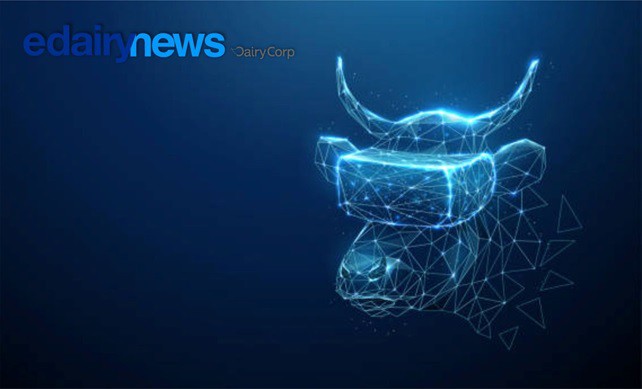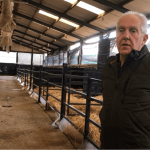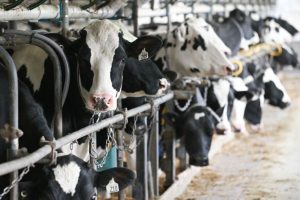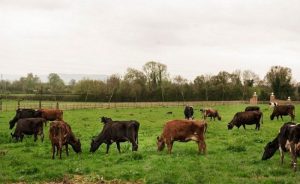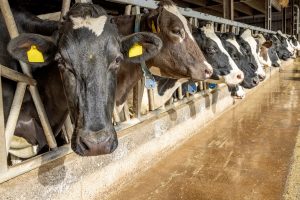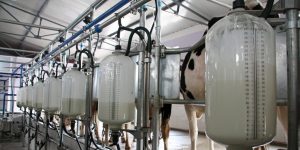
The fourth industrial revolution is the confluence of three worlds: the physical, the digital and the industrial. It changes our economy, it changes the way we interact, the way we consume products (Henrik Von Scheel, Originator of the Industry 4.0 concept).
Industry 4.0, or the 4th Industrial Revolution, was born in Germany at the end of the first decade of the 2000s, and is the biggest transformation of our society in the last two centuries.
New technologies are here to stay and have radically changed everything related to the social, economic and therefore the industrial sector, in a true ecosystem of innovation and digital transformation.
The technologies that characterise Industry 4.0 are
– Big Data, the management and analysis of large volumes of data generated by production processes, which allow for the optimisation of efficiency, quality and innovation.
– Simulation, the use of virtual models to represent and experiment with different scenarios and solutions before implementing them in reality, reducing costs and risks.
– Additive manufacturing, 3D printers to create three-dimensional objects from materials such as plastic, metal or ceramics.
– Cybersecurity, measures and tools to protect computer systems, data and communications from possible attacks or external or internal threats.
– Cloud computing, the use of remote servers to store, process and access data and information via the internet, without the need for their own infrastructure, which allows for greater scalability, mobility and collaboration.
– Internet of Things, sensors and devices connected to the internet that enable the collection, transmission and reception of data on objects, people and the environment, facilitating control, automation and interaction.
– Cyber-Physical Systems, integrated systems that combine physical components, such as machines or robots, with digital components, such as software or networks, which communicate and interact with each other and with the environment.
– Robotics, which is the use of programmable machines that can perform complex, repetitive or dangerous tasks more accurately, faster and safer than humans.
– Virtual Reality, the use of devices such as helmets or goggles that create a simulated environment, allowing the user to experience and interact.
– Augmented Reality: the use of devices such as phones or glasses that superimpose digital information on the real environment, allowing the user to visualise and interact with it.
– Mixed Reality: the use of devices such as helmets or glasses that combine elements of virtual reality and augmented reality, allowing the user to see and interact with virtual objects integrated into the real environment.
Industry 4.0 involves a radical change in manufacturing and production systems to achieve operational excellence, with the automation and digitisation of processes, in order to reduce costs, provide better services, increase performance and generate greater added value.
It is not a clean slate. It does not mean throwing it all away and starting again, but rather linking existing elements with new technologies.
Another key feature of Industry 4.0 is the strong customer orientation: it is practically designed for continuous customer feedback.
How Industry 4.0 concepts are applied in the different links of the dairy chain around the world
In primary production:
Voluntary milking Robots allow cows to be milked when they want, without human intervention, and collect information on milk production and quality, and the health status of the animals.
Sensors and the Internet of Things allow monitoring different parameters of production processes, such as temperature, humidity, pH, conductivity, etc., and transmitting them to information systems that facilitate control and decision-making.
Cyber-physical systems integrate the physical and digital worlds through devices that process, store and communicate data on the processes they control.
Cloud computing and big data store and share large volumes of information generated by sensors and cyber-physical systems, to analyse them using intelligent algorithms that optimise production efficiency, quality and profitability.
At the processing stage:
Dairy processing under the Industry 4.0 concept involves the use of digital and robotic technologies to improve product quality, safety, efficiency and sustainability. Some of the technologies already being applied in dairy food processing are:
Pressure Change Technology: allows milk to be pasteurised without affecting its organoleptic and nutritional properties, by means of a high-pressure heat treatment. It is used by Denmark’s Arla Foods Kruså, with Lyras’ UV pasteurisation technology, to produce milk with a longer shelf life and a lower carbon footprint; INTA in Argentina which is developing a bagging machine for fluid milk, which pasteurises it inside the container by pressure change and cools it, to facilitate direct marketing by small producers; and Germany’s Förster-Technik GmbH which offers a calf milk pasteuriser that uses this technology to guarantee the quality and safety of the milk.
Extrusion technology allows cheeses to be texturised with a mechanical process that modifies the structure of the proteins. It is used by US-based Leprino Foods, which produces mozzarella and other cheeses with extrusion technology, resulting in higher quality and yield; New Zealand’s Fonterra, which uses it to produce cheddar and other cheeses with a firmer, more consistent texture; and France’s Lactalis, which uses this technology to produce Emmental and other cheeses with a more intense flavour and lower fat content.
Microwave technology involves applying high-frequency electromagnetic waves to heat, dry or dehydrate dairy products, reducing energy and water consumption, improving product quality and safety, and increasing productivity. Some of the companies supplying it are the European ENREMILK, the German GEA and the Swedish Tetra Pak.
Closed-loop superheated steam technology for dairy processing is a technique that uses steam at a temperature above saturation to spray-dry skimmed milk powder, utilising waste heat and minimising emissions. It is used by Arla Foods, achieving energy savings of 20 % and a reduction of CO2 emissions of 40 %; the Dutch FrieslandCampina achieving energy savings of 15 % and a reduction of CO2 emissions of 30 %; and the Swiss Nestlé with energy savings of 10 % and a reduction of CO2 emissions of 20 %.
Information and management systems allow the integration and analysis of data generated by sensors and devices in processing plants, facilitating quality control, traceability, process optimisation and decision-making. They are used by Mastellone Hnos in Argentina to manage its production, financial and commercial processes; by Nestlé, which uses Microsoft information and management systems to improve efficiency, innovation and sustainability in production; and by Lactalis, which uses Oracle systems to optimise its supply chain, production and marketing of dairy products.
Distribution and Marketing:
This last link in the chain is integrated into the Industry 4.0 concept with the use of digital and robotic technologies to improve logistics, traceability, safety and customer satisfaction. Some of the technologies that are being applied in the distribution and marketing of the dairy chain are:
RFID and QR codes allow dairy products to be identified and recorded on the move, facilitating inventory control, quality management and traceability from origin to consumption. Some dairy companies using them are:
– France’s Danone uses RFID to track its products from production to distribution, improving efficiency, safety and customer satisfaction.
– Italy’s Parmalat uses QR codes to provide information on the origin, processing and properties of its dairy products, promoting transparency and consumer confidence.
– Argentina’s La Serenísima uses QR codes to facilitate mobile payment for its products, offering convenience and immediacy to the customer.
The Blockchain helps create a decentralised and secure database that records transactions and interactions between actors in the dairy chain, ensuring transparency, trust and efficiency. France’s Carrefour uses it to track the origin and quality of its dairy products, such as fresh milk, cheese or yoghurt, providing detailed information to consumers. Nestlé uses the Blockchain to track its baby products, such as infant formula, from farm to point of sale, ensuring safety and traceability. And Fonterra uses it to facilitate international trade of products such as milk powder or butter, reducing costs and transaction times.
Artificial intelligence and data analytics process and analyse the large volumes of data generated by sensors and devices in distribution and marketing, optimising routes, predicting demand, personalising offers and building customer loyalty. Canada’s Saputo uses them to improve its operational efficiency, product quality and customer experience in its cheese, fluid milk and extended dairy businesses. China’s Mengniu, to optimise its supply chain, reduce food waste and increase the profitability of its products. And China’s Yili to improve inventory management, quality control and customer service across its brands.
Robotics and automation use intelligent machines and systems to perform tasks autonomously, efficiently and accurately in distribution and marketing, facilitating the transport, storage, packaging and delivery of products. Mexico’s Lala uses robotics and automation to optimise its logistics processes, reduce operating costs and improve customer service. Brazil’s Vigor is using robotics to improve production efficiency and product quality. And Australia’s Bega Cheese, to increase its production capacity, competitiveness and sustainability.
Companies have an increasing commitment to the economic development of society and to being more sustainable, and this revolution will make it possible to exercise that responsibility.
Each industry will adapt according to its size, capital and needs, but Industry 4.0 will end business models as we know them.
Valeria Hamann
eDairyNews
